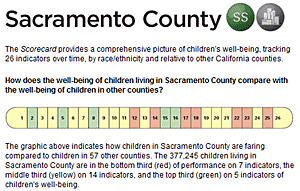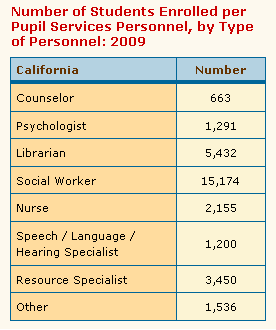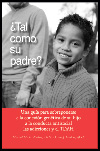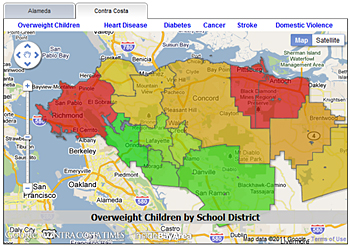Posts Tagged ‘Child Health Initiatives’
Obama Targets Bullying of Gay Youth with June Proclamation
Earlier this month, President Obama again proclaimed June to be National Lesbian, Gay, Bisexual and Transgender Pride Month. In the announcement, Obama called out initiatives set forth to prevent bullying of gay youth:
My Administration is actively engaged with educators and community leaders across America to reduce violence and discrimination in schools. To help dispel the myth that bullying is a harmless or inevitable part of growing up, the First Lady and I hosted the first White House Conference on Bullying Prevention in March. Many senior Administration officials have also joined me in reaching out to LGBT youth who have been bullied by recording “It Gets Better” video messages to assure them they are not alone.
In California schools, more than 1 in 10 7th and 9th grade boys reported being bullied due to their sexual orientation, according to ’06-’08 data. Among girls, 10% of 7th-graders and 9% of 9th graders said the same. Find data for your school district>>
For more insights into these and other bullying data, read our October blog post to mark National Bullying Prevention Month. The president’s “It Gets Better” video is available on YouTube.
Posted by kidsdata.org
Tags: Child Health Initiatives, Child Health Issues, Health Observances
East Bay Studies Reveal Health Disparities
Data released this month from local East Bay studies show wide disparities in several areas of health — and a subsequent impact on life expectancy.
A few key findings, from a series in the Contra Costa Times on these studies:
- In Alameda County, the life expectancy for an Asian American girl is 20 years longer than that of an African American boy.
- In Contra Costa County, children born into low-income communities have a life expectancy of 75 years, compared to 82 years in higher-income areas.
The studies, which considered both adult and child health, also looked at specific health issues such as obesity, asthma, and cancer. Detailed maps show obesity rates — as high as 41% in one school district in Alameda County — and rates of childhood asthma, available by city. These data showed significant disparities between cities in hospitalization rates for childhood asthma, from 800.7 per 100, 000 children in Oakland, to 118.4 per 100,000 in Pleasanton.
The studies were funded by the Hospital Council of Northern and Central California, and aim to help hospitals analyze and address local health needs. County officials say they’ll also use the data to focus their attention and resources on key issues and demographic groups.
If you don’t live in the East Bay – or even if you do – kidsdata.org offers data on cancer rates, asthma hospitalizations, weight, and many other issues for your community.
Kudos to the hospital council and Contra Costa and Alameda counties for generating and using such a rich data set. Such local data are invaluable for raising the visibility of serious child health issues in our communities.
Posted by kidsdata.org
Tags: Child Health Initiatives, Data Projects
Children Now Scorecard Offers ‘Fingerprint’ of Child Health Across California
 |
The scorecard offers a unique fingerprint of how children are faring in each county in California. |
Noting that no two counties are alike in California with regard to children’s health, Children Now recently released its 2010 California County Scorecard of Children’s Well-Being.
The scorecard offers a “fingerprint” for each county in California, showing each county’s performance in a range of areas of child well being, relative to other counties’ performance. Counties are organized according to rural or urban status and, within that, high- or low-income. The 26 measures in the scorecard include education, safety, substance use, connectedness to school, and many others. Data about breastfeeding and prenatal care are cited from kidsdata.org. Check out all the indicators here: http://www.childrennow.org/subsites/publications/invest/scorecard10/scorecard10_home.htm.
And, view each county’s fingerprint at http://www.childrennow.org/subsites/publications/invest/scorecard10/scorecard10_comparison.htm
Posted by Felicity Simmons
Tags: Child Health Initiatives, Data Projects, Data Sources
Think YOU Can Balance Our State’s Budget?
Today, Gov. Schwarzenegger released his revised budget proposal. Don’t like the proposed cuts? Now you can balance the budget yourself.
The SF Chronicle recently featured the California Budget Challenge, an online game that allows users to attempt to balance the state’s $85 billion budget. Are you hoping California will allocate more funding for kids and families? More money for schools, parks, or health programs? Here’s your chance to spend as you please, but be wary – the Challenge also asks you to decide how you would pay for your dream version of the state budget.
The Challenge, created by the nonpartisan organization Next 10, allows users to build a state budget based on individual “values and vision,” but it also serves to educate voters about the numerous policy choices our legislators must make. For each major budget decision (prison cuts, increases in per pupil spending, gas taxes, etc.), the Challenge offers background information, as well as the arguments for and against each cut or expenditure. After each decision you make, you also can see how fellow Californians chose from the many budget options. Next 10 also offers several other resources to educate the public about the budget process in California, such as the handy 7 facts about the state budget.
To access the California Budget Challenge and other resources, visit their website at http://www.next10.org/next10/programs/budget_challenge.html#.
Posted by Jordan Handcox
Tags: Child Health Initiatives, Data Projects
School Nurses: What a Difference Just One Can Make
 Today is National School Nurse Day. School nurses provide a link for all school children to available health resources and, in many cases, offer much-needed basic health care and screenings.
Today is National School Nurse Day. School nurses provide a link for all school children to available health resources and, in many cases, offer much-needed basic health care and screenings.
Yet despite their valuable contributions, there continues to be a long-standing nursing shortage in most school districts in California. Statewide, there were 2,155 students for every school nurse during the 2008-09 school year. Many school districts must share a single nurse with several other districts.
The decision not to fund school nurses has a significant impact on all children, but particularly on children with special health care needs. Many students now come to school requiring daily care, such as insulin injections, asthma medication, or care for medical equipment. Frequently, no school staff member has the skills to provide this care. Yet, the state’s current economic climate could mean even fewer nurses at school.
One encouraging sign is proposed federal legislation, sponsored by Senator Charles Schumer and Rep. Carolyn McCarthy, that aims to make grants to states for the purpose of reducing the student-to-nurse ratio in high schools, elementary schools, and kindergartens.
On a more local level, our Foundation, along with Lucile Packard Children’s Hospital, made a 5-year grant in 2007 to the San Jose Unified School District with the goal of increasing the number of school nurses available to the children in schools with a high percentage of students from low-income families. Early evaluation results from this grant, which added four nurses in the district, already have shown improved outcomes for children with hearing, vision, asthma, or dental problems, due to the availability of a school nurse. Since the implementation of this grant, more than 70% of teachers surveyed have said that school nurses helps them teach more effectively.
We will continue to report on the results of this effort to restore nursing to our schools. What is happening in your district?
Posted by Jordan Handcox
Tags: Child Health Initiatives
Kidsdata.org Partners with New Public Policy Site, HealthyCal.org
 Kidsdata.org is pleased to announce a partnership with the recently launched HealthyCal.org — a site that tracks health policy at the state and community level to highlight issues affecting Californians. The site features updates on legislation, and posts on issues from key state leaders and advocates. And — full disclosure — a weekly data posting from kidsdata.org that focuses on an important issue affecting children’s health in California.
Kidsdata.org is pleased to announce a partnership with the recently launched HealthyCal.org — a site that tracks health policy at the state and community level to highlight issues affecting Californians. The site features updates on legislation, and posts on issues from key state leaders and advocates. And — full disclosure — a weekly data posting from kidsdata.org that focuses on an important issue affecting children’s health in California.
Veteran journalist Daniel Weintraub, formerly the public affairs columnist for the editorial pages of the Sacramento Bee, is editor-in-chief of HealthyCal.org, which has received initial funding from The California Endowment. Kudos to Dan for this pioneering effort in the world of healthy policy blogging — we’re glad to be a part of it. Take a look: www.healthycal.org
Posted by Felicity Simmons
Tags: Child Health Initiatives, Data Projects
At Packard Hospital Forum, Experts Detail Why Kids Need Health Reform
“Kids can’t wait” was the theme of the day at the Child Health Forum on March 25, a gathering of doctors, nurses, nonprofit staff, teachers and others to discuss the future of health care for kids in California. The event, sponsored by Lucile Packard Children’s Hospital and the Children’s Health Fund, fortuitously coincided with the passage of massive health care reform legislation that Congress has been debating for more than a year.
However, the speakers emphasized that health care for kids goes far beyond simply having an insurance card. Other major factors, such as access to care, affordability, and parental health, will determine whether the health care reform efforts have a real impact on our state’s children and youth.
Ted Lempert, president of Children Now, lauded the passage of health reform efforts, but cautioned that other issues are not resolved under the new health care reform laws. He noted that a key issue for California is undocumented kids, who are not covered under reform, and asserted that it is in the financial interest of the state to cover these children through health insurance. Along with others, he cited the current shortage of pediatric specialists, another growing concern that is not fully addressed by health care reform.
From a parental point of view, Lisa Wise, mother of a young son with Crouzon Syndrome, discussed how having a chronically ill child leads some parents to shape their career decisions based on which employer has the best health insurance benefits. For parents like Lisa, health reform holds the promise of eventuallying providing more insurance options that are affordable and family friendly.
Dr. Paul Wise, the Richard E. Behrman Professor of Child Health and Society at Stanford University School of Medicine, stressed the importance of taking care of parents as we focus on improving the health of kids. Children are poor because their parents are poor, he said, and insuring and nurturing mothers can lead to better health outcomes for kids. This reminds us all that as we seek to address the needs of children in California, we cannot neglect the needs of the parents who tend to these children every day.
Posted by Jordan Handcox
Tags: Child Health Initiatives
Is Your Kid Eating Pizza for Breakfast?
 |
This photo from the New York Times notes the new series Jamie Oliver’s Food Revolution, which addresses nutrition in school lunches. |
If you watched ABC a few Sundays ago, you may have seen the premiere of a new show titled Jamie
Oliver’s Food Revolution. The show follows Jamie Oliver, a British chef known the world over for his healthful cooking, and more notably, for transforming the school lunch program in England into a healthful and budget-conscious success.
His new American reality show took him to Huntington, West Virginia, which, according to data from the Center for Disease Control and Prevention, earned it the moniker by the Associated Press as “Unhealthiest City in America” for 2008. Having no shortage of ambition, Oliver decided to observe and attempt to improve the city’s school lunch program, which served pizza for breakfast each day.
Seeing the state of a school lunch program in the unhealthiest city in America – where more than half of the adult population is considered obese – makes every parent think about what their children eat – and maybe, too, how there own community is faring regarding kids’ weight.
While California cities can’t claim to be the unhealthiest in America, there are disparities with the healthy weight of California children. For example, a smaller percentage of Latino and Pacific Islander children are at a healthy weight compared to their peers in other racial/ethnic groups. Get our most recent data on California students with healthy weight to see how kids in your community compare.
Posted by kidsdata.org
Tags: Child Health Initiatives
Advice on Challenging Behaviors
 Dr. Marisol Muñoz-Kiehne, host of the Nuestros Niños radio show for parents, has published a helpful new book, ¿Tal Como Su Padre? The volume advises Spanish-speaking parents on how to observe, understand, and respond to problematic behaviors in their children. Dra. Marisol, a psychologist, discusses childhood issues in Spanish every Sunday morning at 8 a.m. on La Kalle, 100.7 and 105.7 FM, La Nuestra KBBF 89.1 FM, Tricolor KLOK 99.5 FM, Jose KSES 107.1 FM, and KMBX 700 AM. The show is rebroadcast on Fridays at 11 a.m. on KVMR-FM 90.5 and 89.7 FM. For more information, en español, visit www.nuestrosninos.com.
Dr. Marisol Muñoz-Kiehne, host of the Nuestros Niños radio show for parents, has published a helpful new book, ¿Tal Como Su Padre? The volume advises Spanish-speaking parents on how to observe, understand, and respond to problematic behaviors in their children. Dra. Marisol, a psychologist, discusses childhood issues in Spanish every Sunday morning at 8 a.m. on La Kalle, 100.7 and 105.7 FM, La Nuestra KBBF 89.1 FM, Tricolor KLOK 99.5 FM, Jose KSES 107.1 FM, and KMBX 700 AM. The show is rebroadcast on Fridays at 11 a.m. on KVMR-FM 90.5 and 89.7 FM. For more information, en español, visit www.nuestrosninos.com.
Posted by Eileen Walsh
Tags: Child Health Initiatives
Palo Alto City Council’s Top Priorities Include Kids
Our office is located in Palo Alto, CA, just down the street from city hall, so it’s gratifying to see that the Palo Alto City Council voted a few weeks ago to make a focus on youth well being one of the cities top 5 priorities for 2010. Adolescents in Palo Alto have gone through a tough period, with a recent spate of teenage suicides. But kids in communities across California face steep challenges, so it’s important that local governments make them a priority. Do you know of any others that have?
For those interested in more about Palo Alto’s kids, here’s a data summary.
Posted by Andy Krackov
Tags: Child Health Initiatives



